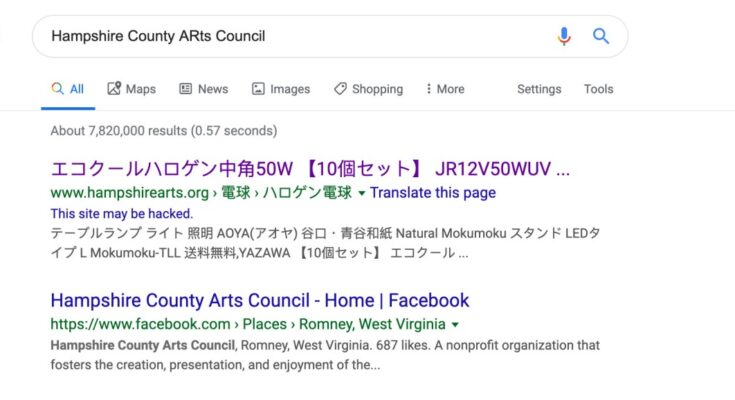Imagine logging into your website’s analytics one day and finding a sudden surge in traffic. Excited, you dig deeper, only to discover that the majority of these visitors are being directed to your site via Japanese keywords you never targeted. This alarming situation is known as the Japanese keyword hack, and it’s more common than you might think.
In this blog post, we’ll explore what the Japanese keyword hack is, how it can wreak havoc on your website’s SEO, and most importantly, how to detect and fix it. If you’re a webmaster, SEO professional, or website owner, read on to arm yourself with the knowledge to protect your site from this insidious threat.
What Is the Japanese Keyword Hack?
The Japanese keyword hack is a type of cyberattack where hackers infiltrate a website and inject Japanese keywords into its pages. This manipulation tricks search engines into displaying Japanese titles and descriptions for your site, often redirecting your legitimate traffic to spammy or malicious websites.
How the Hack Works
Hackers gain access to your website through vulnerable entry points such as outdated plugins, weak passwords, or unpatched security flaws. Once inside, they inject malicious code that alters your site’s metadata. The hack can take several forms:
- Keyword Injection: Hackers insert Japanese keywords directly into your metadata.
- Content Injection: Entire pages are created with Japanese content.
- Redirects: Users are redirected to other websites.
Consequences for SEO
The Japanese keyword hack can have severe consequences for your SEO:
- Loss of Credibility: Search engines may flag your site as compromised.
- Traffic Diversion: Genuine visitors are redirected to unrelated or harmful sites.
- Ranking Drop: Your site can lose its ranking as search engines penalize it for spammy content.
Why Early Detection Matters
Detecting the Japanese keyword hack early can save you from significant damage. The longer the hack remains undetected, the more severe its impact on your site’s SEO and credibility.
SEO Implications
If search engines detect suspicious activity on your site, they may de-index it, making it invisible in search results. This is catastrophic for any website relying on organic traffic for business.
User Trust
Visitors who encounter suspicious redirects or foreign language content will quickly lose trust in your site. Recovering from such a breach is time-consuming and costly.
How to Identify the Hack
Tools and Methods for Detection
Identifying the Japanese keyword hack requires vigilance and the right tools. Here’s how you can detect it:
- Google Search Console: Regularly check the Search Console for unusual queries and click-through rates. Look for foreign language keywords.
- Site Search: Perform a site search using the “site:” operator in Google. For example, type “site:yourwebsite.com” to see how your site appears in search results.
- Security Scanners: Use security tools like Sucuri or Wordfence to scan your site for vulnerabilities and malicious code.
Manual Checks
In addition to automated tools, conduct manual checks:
- Review Metadata: Inspect your website’s meta titles and descriptions for any foreign language content.
- Check Backlinks: Use tools like Ahrefs or SEMrush to analyze your backlinks for any suspicious or spammy links.
Removing the Hack
Manual Removal
If you prefer a hands-on approach, follow these steps to manually remove the hack:
- Backup Your Site: Before making any changes, ensure you have a complete backup of your site.
- Access Files: Use an FTP client or your hosting control panel to access your website’s files.
- Remove Malicious Code: Identify and remove any foreign language keywords or suspicious code.
- Review Plugins: Deactivate and delete any outdated or unused plugins.
Using Security Plugins
For a more automated solution, consider these security plugins:
- Wordfence: This plugin scans your entire site for malware and provides detailed reports on any issues found.
- Sucuri: Offers comprehensive security services, including malware removal and site protection.
- MalCare: A user-friendly plugin that offers deep scanning and one-click malware removal.
Securing Your Website
Regular Security Checks
Implementing regular security checks can mitigate the risk of future attacks:
- Update Regularly: Ensure all software, including CMS, themes, and plugins, are up-to-date with the latest security patches.
- Strong Passwords: Use complex passwords and change them regularly.
- Two-Factor Authentication: Add an extra layer of security with two-factor authentication.
Security Best Practices
Adopt these best practices to bolster your site’s defenses:
- Use Security Plugins: Install reputable security plugins to monitor and protect your site.
- Limit Login Attempts: Reduce the number of login attempts to deter brute force attacks.
- Secure Hosting: Opt for a hosting provider that offers robust security features.
Reporting the Hack
Inform Search Engines
Once you’ve removed the hack, it’s crucial to inform search engines:
- Google Search Console: Use the console to request a review of your site after cleaning it up.
- Bing Webmaster Tools: Similarly, notify Bing to ensure your site is indexed correctly.
Ensuring Correct Indexing
After reporting the hack, monitor your website’s indexing:
- Verify Indexing: Perform periodic site searches to ensure your pages are indexed correctly.
- Submit Sitemaps: Regularly submit your sitemaps to search engines for better indexing.
Recovery Stories
Successful Case Studies
Here are some examples of websites that successfully recovered from the Japanese keyword hack:
- TechBlog noticed a sudden drop in traffic and discovered Japanese keywords in their metadata. By using Sucuri to clean their site and implementing regular security checks, they regained their ranking within three weeks.
- FashionBoutique faced similar issues but opted for manual removal. They followed up with Google to ensure correct indexing and saw a return to their previous traffic levels within a month.
Conclusion
The Japanese keyword hack is a serious threat to your website’s SEO and credibility. By understanding how it works, identifying it early, and taking appropriate measures to remove it, you can protect your site from significant damage. Implementing ongoing security practices will help safeguard your site against future attacks.
Ready to secure your website and ensure it stands strong against threats? Start implementing these practices today and join our community of vigilant webmasters and SEO professionals. Together, we can keep the internet a safer place.



